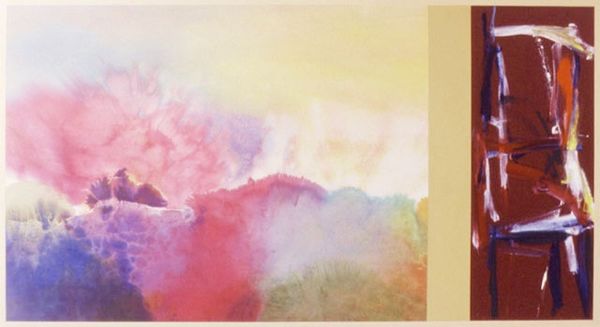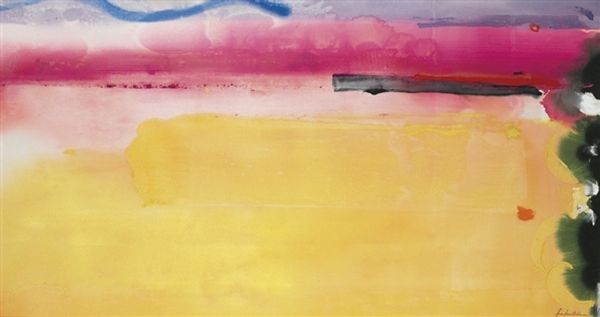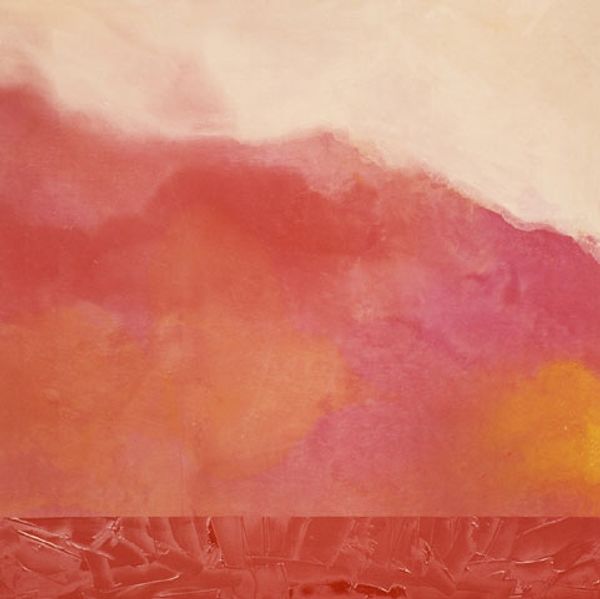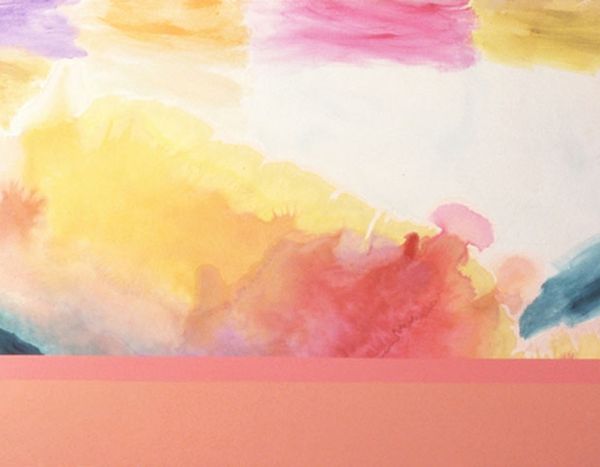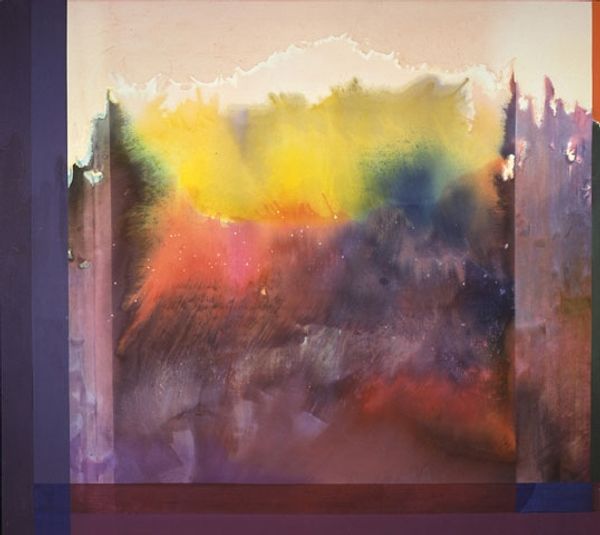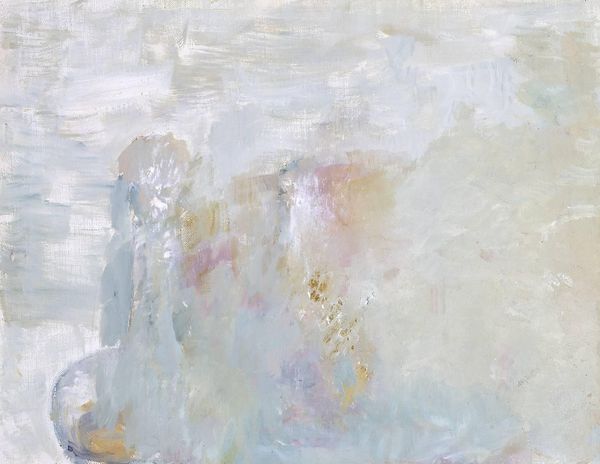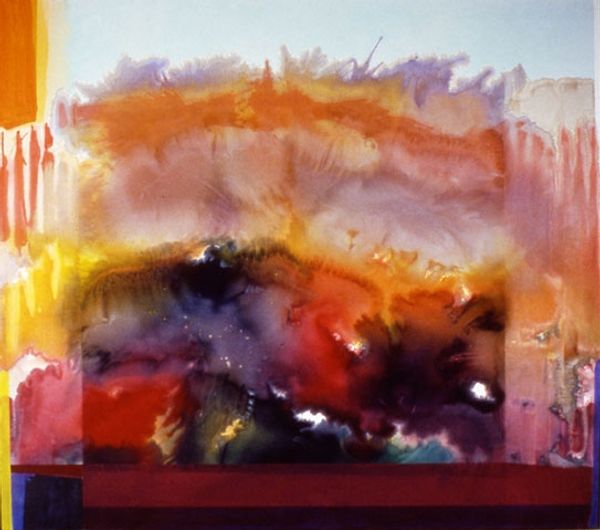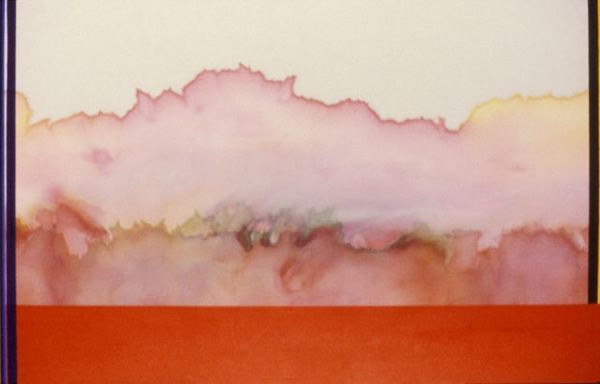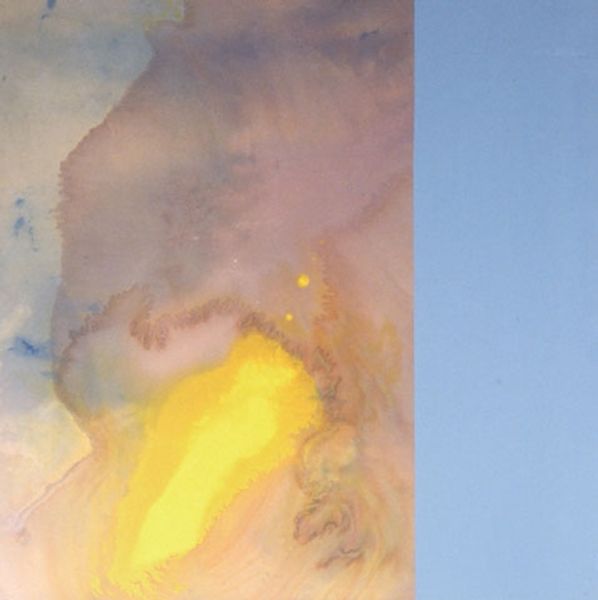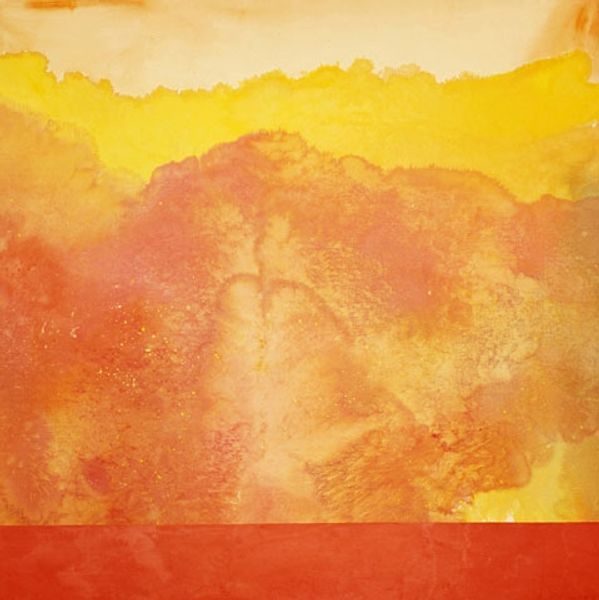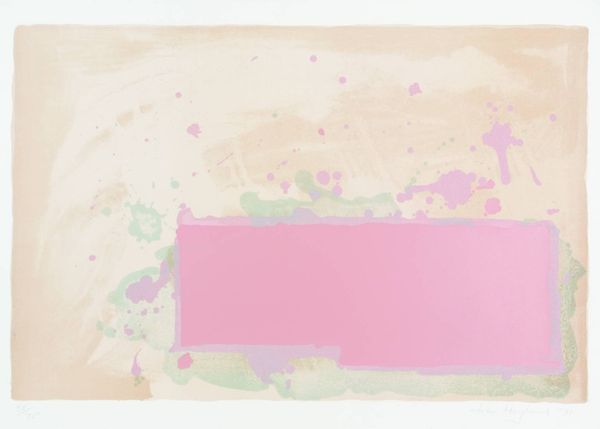
watercolor
#
abstract-expressionism
#
abstract expressionism
#
contemporary
#
water colours
#
landscape
#
colour-field-painting
#
watercolor
#
abstraction
#
watercolor
Copyright: Ronnie Landfield,Fair Use
Editor: Right in front of us we have "Diamond Lake," a watercolor created by Ronnie Landfield in 1969. The washes of purple and hints of other colors give it an ethereal feel, almost dreamlike. What strikes you most about it? Curator: What grabs me is the materiality, specifically, Landfield's deliberate engagement with watercolor in such a monumental scale. He isn't trying to imitate the effects of oil painting or obscure the inherent qualities of the medium. How does this emphasis on process contribute to its overall impact? Editor: I guess, because the watery paint pools and blooms in unpredictable ways, it makes it feel more organic, less controlled than, say, hard-edge abstraction. Curator: Precisely! This aligns it with contemporaneous explorations into process-based art and anti-form. Think about how the watercolor itself—the pigment suspended in water, applied to paper—becomes both the subject and the object of the work. In 1969, this kind of staining technique questioned traditional notions of artistic skill. Did Landfield fully “make” the image, or did he allow the inherent properties of the materials to guide the composition? Editor: So, the artist's choices are just as important as the, sort of, accidental effects of the watercolor? It becomes a collaboration with the materials? Curator: Absolutely! It invites us to reconsider the labor involved. Less about masterful illusionism and more about setting up a set of parameters and then engaging in a dialogue with the materials themselves. Consider the relationship to craft – challenging conventional notions of the art object by focusing on the making itself. Editor: I see it now, looking beyond the surface is more meaningful to understanding the art and choices behind it. Curator: Agreed! It really shifts our focus onto the social and material context surrounding art production.
Comments
No comments
Be the first to comment and join the conversation on the ultimate creative platform.

